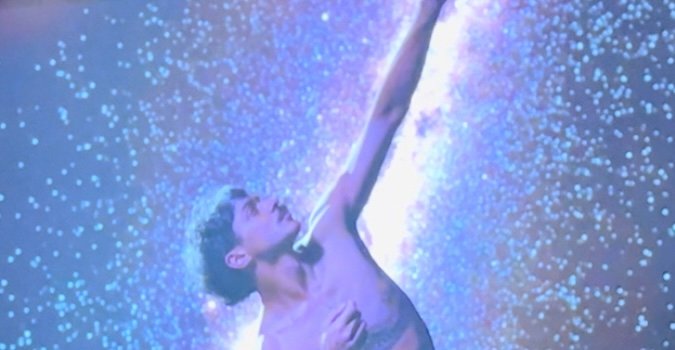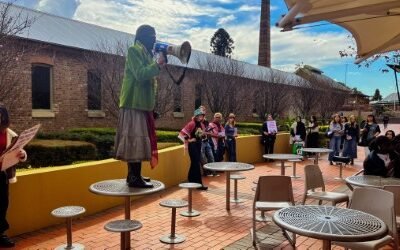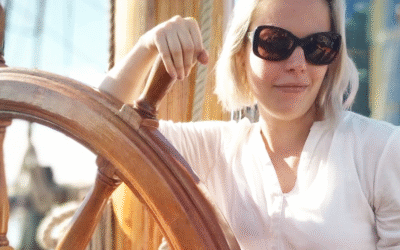(Picture of a frame from the ‘Celestial Emu’ short film. Photo credit: Luci Kugathasan, 2024)
Introduction
On Tuesday, the 13th of August, I attended the Sydney Science Festival’s ‘Celestial Emu’ event at the Powerhouse Museum alongside W’SUP’s Social Media Officer, Julia Bell. The event started with Uncle Ghillar Michael Anderson greeting the audience. Akala Newman then delivered a beautiful and soothing singing performance, followed by a colourful dance performance by the KEBI KUB Group. Before the event’s end, attendants could watch the short film project, ‘The Celestial Emu,’ and view Gail Mabo’s exhibition, ‘I Put Stars on the Ground’.
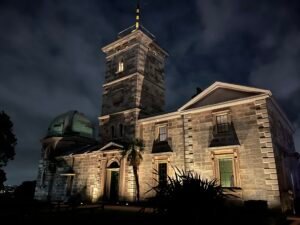
(Front of Sydney Observatory. Photo credit: Luci Kugathasan, 2024)
Akala Newman’s singing performance in Gadigal
The event started with Akala Newman, a Wiradjuri-Gadigal woman and talented singer-songwriter. She guided the audience through she began her craft in songwriting and spoke about her culture and history. She then talked about her father’s experience and how he taught her how to connect with her country and ancestors.
She describes how her father told her that before reuniting with his granddad after the police took him and his siblings from his family, he knew he was never alone as he looked up to the stars and into the darkness because that was where their ancestors lay.
Newman explained she conducts her songwriting practice through listening to the sounds around her and connecting with nature and her ancestors.
As she talked to the audience, Newman sang beautiful melodies in Gadigal, and it was a cerebral experience listening to her sing. She said that through art and storytelling, individuals can feel connected with themselves, others, their community and nature.
Newman then finished by reciting a beautifully written poem she wrote for the 2022 Biennale, expressing her desire to connect with nature and Baiame.
Gail Mabo’s talk about her exhibition ‘I Put Stars on the Ground’ and craft with Rachael Hocking
Rachael Hocking then introduced Gail Mabo, who talked to the audience about her exhibition, her craft, and the inspirations and stories behind them.
Gail Mabo is the proud daughter of Eddie Koiki Mabo, the man who fought for Aboriginal rights in the 90s. She’s a Meriam woman of the Piadram clan in the Torres Strait Islands. Her craft ranges from performance to visual art and is rooted in her Indigenous cultural practices. She started her career as an artist in 1979 as a dancer and has utilised many mediums to portray her Aboriginal culture to the world.
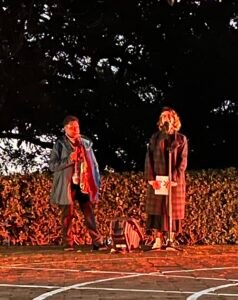
(Gail Mabo speaking about her exhibit and craft next to Rachael Hocking. Photo credit: Luci Kugathasan, 2024)
Mabo’s exhibit, ‘I Put Stars on the Ground,’ shines a light on the First Nations custodianship of Sky Country. The exhibit is a room with a bowl of sand in the middle and a magnifying glass over it. She said that she always loved the shapes of the grains of sand because they resembled stars.
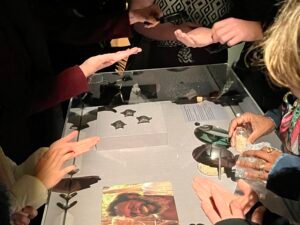
(The guests at Gail Mabo’s exhibit taking part in trying to look for the stars in the grains of sand. Photo credit: Luci Kugathasan, 2024)
She explains that the stars were dead microscopic organisms. They were from a deep trench between three Torres Strait islands called Mer Dauar and Waier. Then, they floated from the trench to Webudu Beach. Her father took her and her classmates on an excursion to the beach when she was 8. He told the students to close their eyes, put their hands out, and put the sand from the beach into their hands. Then, he asked the students to look at the sand. The students slowly realised that there were stars within the grains of sand.
Curious, Mabo took a sample of sand to the University of Sydney and asked the scientists to examine it under a microscope. They offered to create a 3D rendering of the sand.
Following this analysis, the Art Gallery of New South Wales invited Mabo to host an exhibition to create a Tagai installation. The Tagai is the warrior in the sky for Torres Strait Islanders. It dictates when to conduct rituals such as planting, harvesting or hunting. The Art Gallery saw her small map and asked if they could make it bigger. She agreed, and they made it 3 metres by 3 metres. After this change, Gail thought the shells would not be enough to complete the artwork but thought of a great alternative: the stars. She then made the sand the focal points of the stars that represent the Tagai.
Dance performance by KEBI KUB
Sydney-based dance group KEBI KUB represents the Eastern Island of the Torres Strait. KEBIKUB means observing the sky and noticing the changing weather patterns, which reflects the group’s goals. Before the performance, Ingrid, the group’s leader, explained the group’s mission. The group aims to create change for young people by teaching them their culture so that they can preserve it wherever they go.
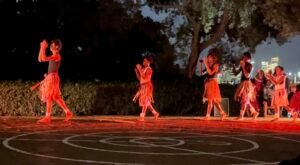
(KEBI KUB dance group performing at ’Celestial Emu’ event at Powerhouse Museum. Photo credit: Luci Kugathasan, 2024)
Near the end of the event, guests were encouraged to go inside and view Gail Mabo’s exhibition and watch the short film project ‘Celestial Emu’.
Watching the Celestial Emu short film
‘Celestial Emu’ is a short film project by Gamilaroi astrophysicist Karlie Noon and dancer Daniel Mateo, directed by Olivia Costa. Noon narrates the short film as Mateo dances with constellations in the backdrop.
The Celestial Emu is a unique feature in our southern skies. Noon explains that this beautiful constellation emerges from the dark dust lanes observable in the Milky Way band that crosses our sky. The constellation is called Gawarrgay in the Gomeroi language. It takes form in the Coalsack Nebula. The emu’s body stretches most of the length of the sky towards the northeast.
Noon then explains the different stages of the constellation and how they dictate the First Nations people’s rituals and practices, including when to perform them and their meanings.
The First Nations people conduct their practices according to the stage of the Gawarrgay, such as when the emus (Dhinawan in Gamilaraay) lay their eggs, when egg collection can start and must stop, when the First Nations people should move locations, and when the Dhinawans on land are at waterholes. Then, after a few months, the annual cycle of the Gawarrgay constellation repeats.
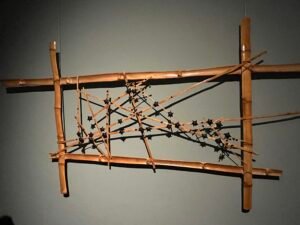
(‘The Celestial Emu’ exhibit structure in Powerhouse Museum. Photo credit: Luci Kugathasan, 2024)
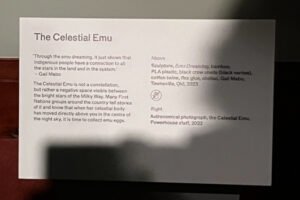
(‘The Celestial Emu’ exhibit sign in Powerhouse Museum. Photo credit: Luci Kugathasan, 2024)
Conclusion
In conclusion, this event was insightful and informative, allowing me to learn more about Aboriginal culture, beliefs, and practices. It was a wonderful and cerebral experience, and I am grateful to have attended.

